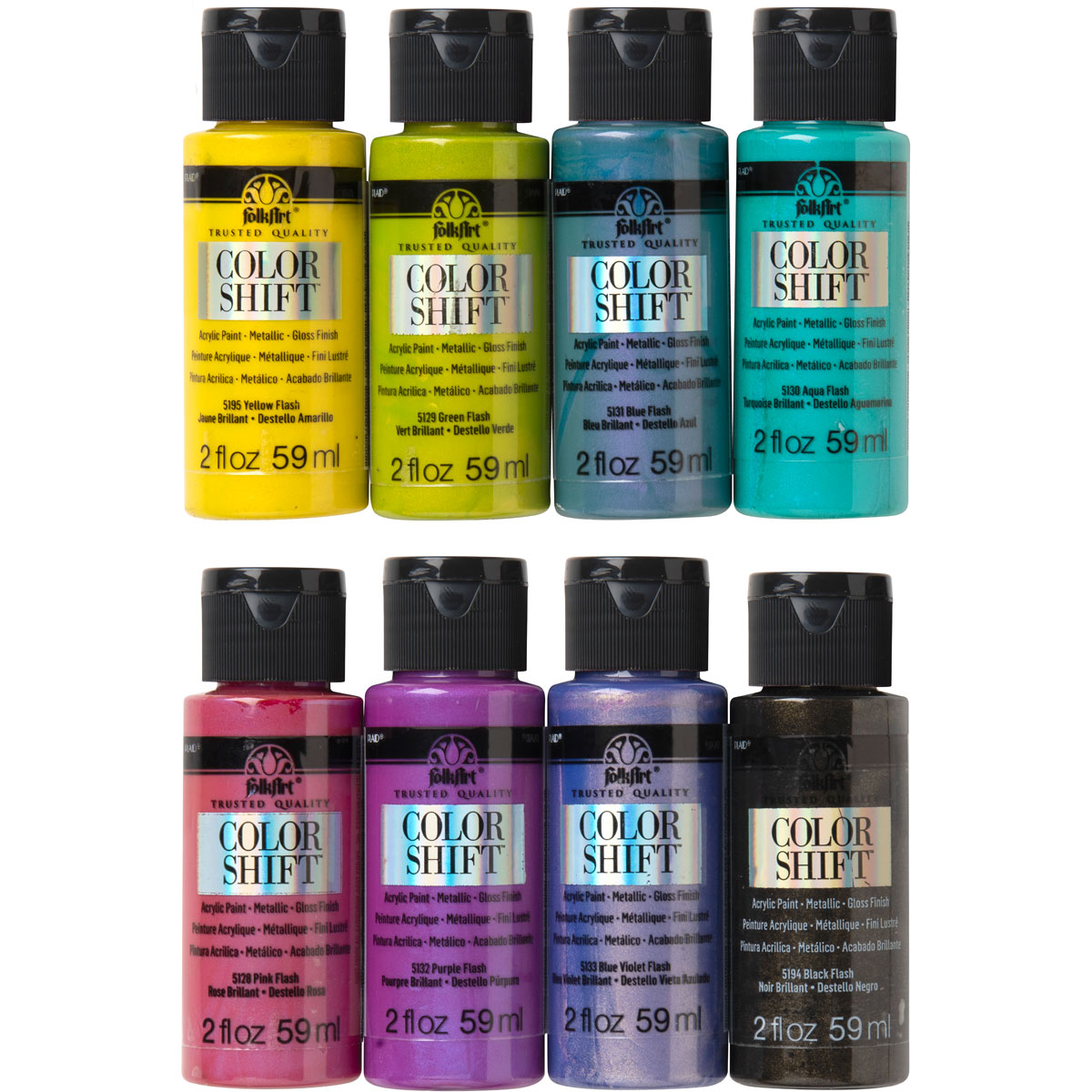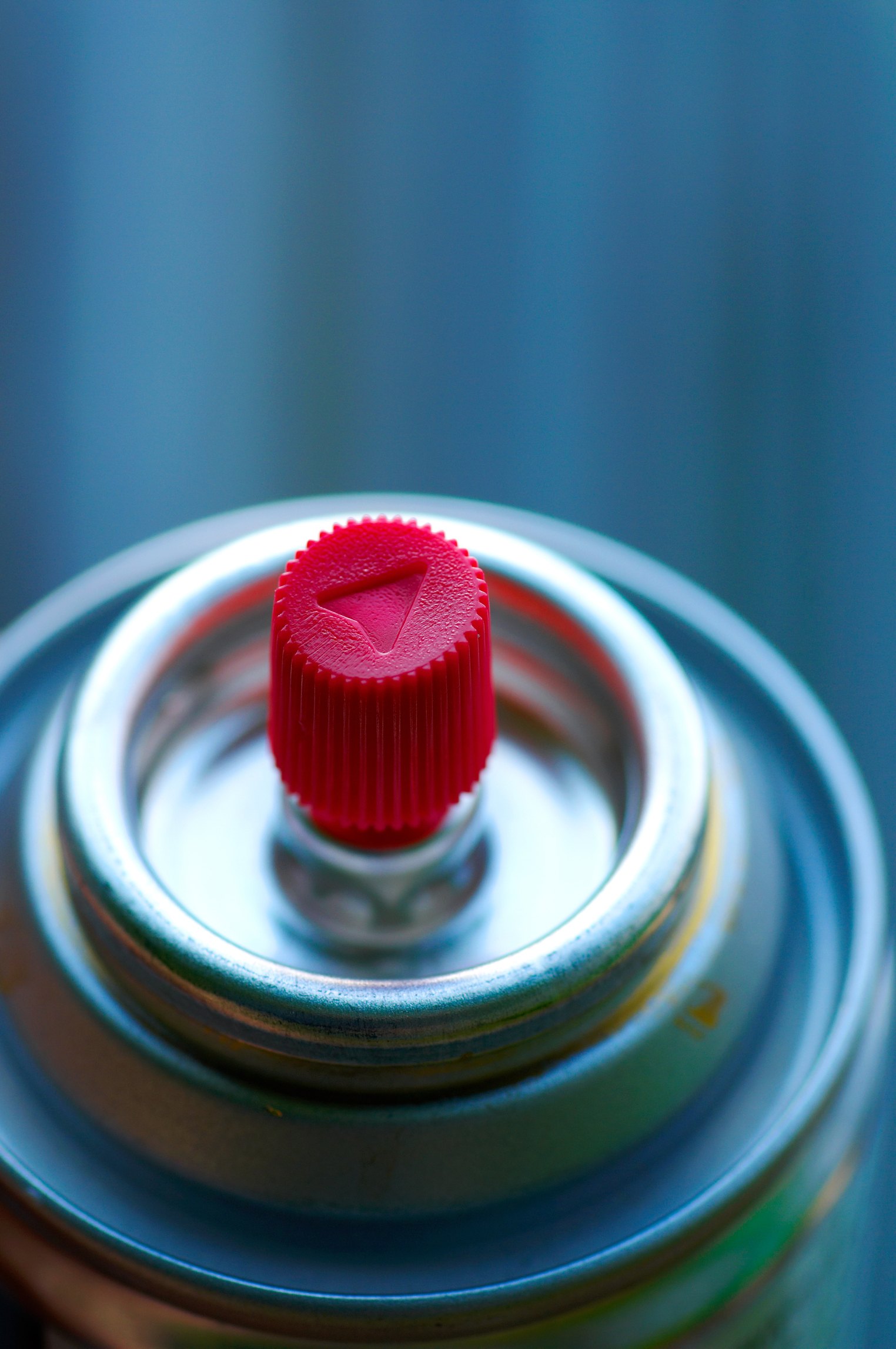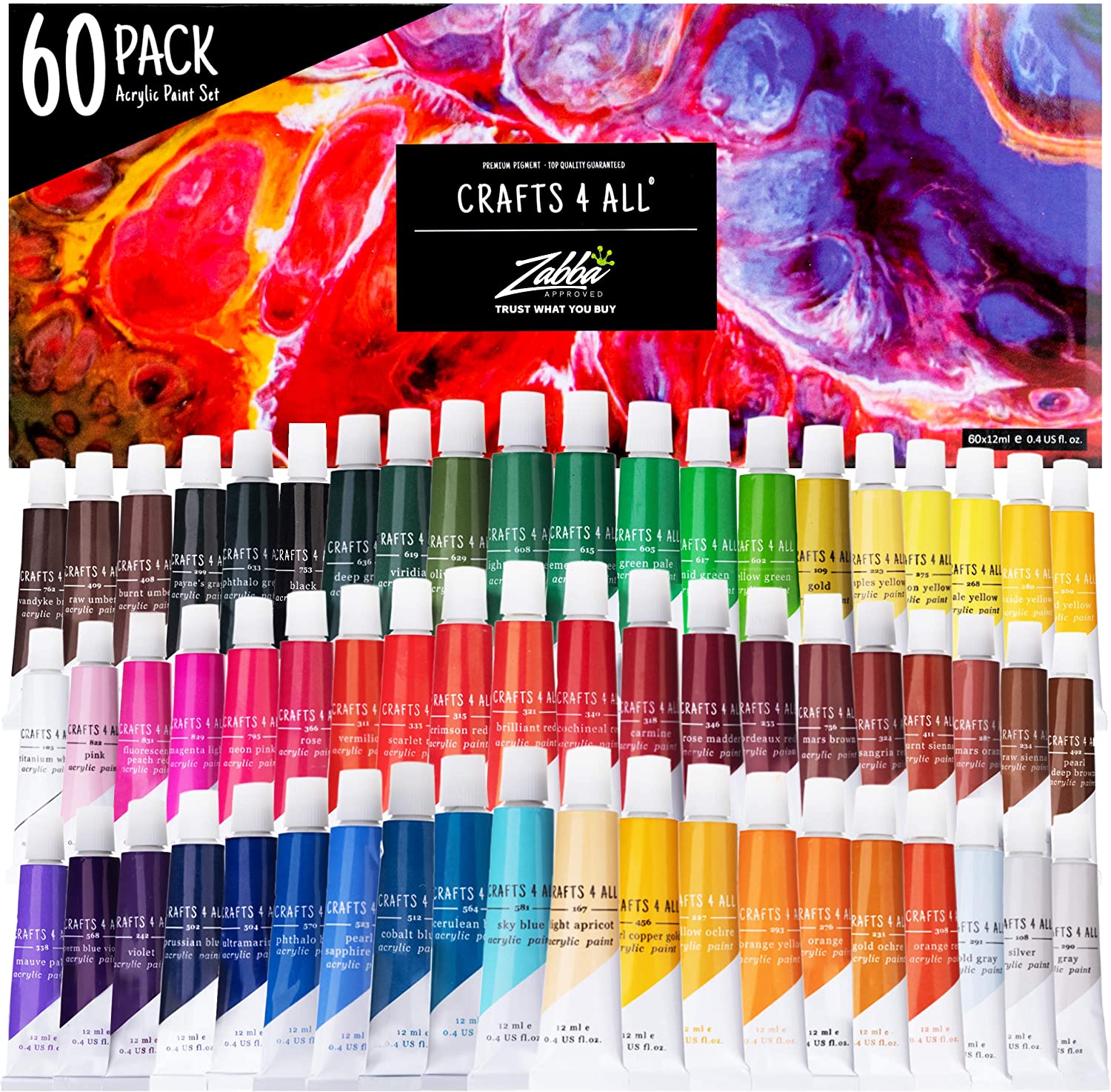To get wet acrylic paint stains out of clothes, first run the stains under cold water to flush out as much of the paint as possible. Then, apply a commercial stain remover to the stains. Machine wash your garment using warm water, and the stains should be gone! For acrylic paint stains that are already dry, start by dabbing the stains with some rubbing alcohol and a cloth until you see some of the color transfer to the cloth. You can also use nail polish remover, hairspray, or another alcohol-based product. Finally, apply a stain remover, and machine wash your garment with warm water.
Remember not to dry your clothing until the acrylic paint is completely gone since it could cause the stains to set. It is essential that you varnish your completed acrylic paintings. The varnish will protect the painting from dust, UV rays and yellowing. … Varnish comes in gloss, satin or matte finish.
I usually stick with gloss varnish because I love the look of a glossy finish, but you may have your own preference. Varnish comes in gloss, satin or matte finish. Because acrylic paint is not as absorbent as paper I would suggest a light varnish over your work rather than fixative. You could apply an isolation coat of 2 part Acrylic Soft Gel Gloss and 1 part water over the work , allow that to dry fully then apply an acrylic picture varnish over the top.
That is a very thorough way of protecting your work, because if the varnish got dirty you could remove it and apply a fresh layer. A lighter method could be a couple of layers of spray varnish, which would give protection, but is a permeable layer so may need reapplication in the future. Similar to hairspray, nail polish may react badly to the acrylic paint and might destroy your design. Another thing with nail polish is that over time you will notice a significant yellowing and will not stay clean for very long.
It would be best to opt for a proper sealant or an acrylic gloss to seal painted rocks. Krylon's clear acrylic coat is smudge-proof and moisture resistant. It improves your artwork and adds contrast. A number of people have reported using PVA glue as a sealant on their acrylic paints to try and provide their artwork with some protection against water.
As you can imagine, once the PVA starts to peel it can pull parts of your acrylic paint off your canvas or paper too. Although it would stand to logic that nail polish would offer some waterproof protection to your acrylic paints, we feel that the potential downsides covered above out weight it. By using water, as acrylic paints are water-based, and they will dissolve in water.
Simply adding a few drops of warm water to the paint stain will moisten the paint, making it easy for you to remove. This is the approved method of how to get dried acrylic paint out of clothes. On top of this, some hairspray formulas may causes issues with your paints and start to break them down and potentially ruin your artwork. Although some people do apply two coats of their sealant, this is usually not required provided that you are using a reputable product that has a proven track record. Applying clear nail polish to seal acrylic paint is the best and easiest method for keeping your nails protected and shiny.
If you can find a non-toxic topcoat, that's even better. Remember, acrylic paint is water-based so without a top coat your acrylic nail paint will come off super quickly. Though the first version of acrylic paint was invented in the 1940s, this medium didn't become available commercially for artists until the mid-1960s. Acrylic paints have a level of versatility you can't find in any other medium.
Depending on what you mix in, you can make acrylics look like watercolors or oil paints. Plus, you can apply this paint to many different surfaces, from fabric to canvas to wood. Acrylic paint washes out of clothes most easily while the paint is still wet. It is possible to remove both wet and dry acrylic paint from clothing using several different treatments.
The most successful of these methods include using dishwashing soap, isopropyl alcohol, or a nail polish remover that contains acetone. Clear nail polish "could" work for acrylic. Ideally, you want to use clear spray paint to seal off acrylic paint.
For a semi-glossy finish use Rust-oleum Crystal Clear Enamel. I admit i like the mentioned epoxy coat idea over a dividing layer, but well aware of off gasing curing paints that would fail with a watertight top finish on my spray paint murals. I was intentionally looking for a non yellowing varnish/clear coat that didn't have solvents or harsh chemicals that are yellowing my acylic white primer/paint.
Durable enough to protect from traffic with uv stability. Then I use rustoleum 2x spray colors on top of my acylic, so a clear finish that is compatible with acylic & spraypaint. I wanted a 2-3 day outdoor finished job, or I give up on a sealer. To go with a complete acrylic system to rush the curing time may help.
I've only come across acrylic ureathanes, or something as durable as Bona HD floor coating, but it seems to expensive. The only other system that works is a breathable hard wearing sealer, as used on stains which breath & last decades. If you're trying to wash acrylic paint from your clothes, try running them through the washing machine.
Next, soak the fabric in rubbing alcohol or nail polish remover for at least 15 minutes and a scrub brush or old toothbrush to scrape off the paint. Repeat these steps as needed to remove the paint. To make acrylic paint waterproof, you will need to apply a sealer such as a varnish, for example.
There are spray sealers that are the most commonly used in the art world. The sealer will protect the coat of acrylic paint from the elements. I like to either use an acrylic sealer or a varnish to seal my acrylic paints.
Acrylic paint, tempera paint and other types of paint that you might use on rocks cannot be sealed with hairspray. Hairspray is neither permanent nor waterproof and some formulations of hairspray and paint react badly to each other and could cause your paint to melt or get gooey! Once you can apply the finisher evenly on the leather surface, it would look pretty nice.
You can search for how to seal acrylic paint on faux leather and follow the steps in applying the sealants to give off a glossy appearance. Not only have model railroaders used hairspray as a fixative, but artists have done so as well. Art supply and craft stores sell workable and non-workable fixatives in rattle cans, but they can be pricey. Hairspray is a cheaper alternative used by many art students or artists short on cash. They apply it over their charcoal drawings or pastel paintings. I've used it to get pastels to adhere to brass--it worked, it dried rock hard.
I think you might have misunderstood how to do this technique. You can do it with spray paint but the model needs to be primed first and let it cure completely before moving on to the next step. A "hot" primer like a rattle can works best for this since it bonds much better to the model.
If you use a rusty colored primer it'll save a step. The model needs to be the color you want to show through the topcoat of paint before you apply the hairspray. Then the next color needs to sprayed on, not brush painted. If you brush paint it with acrylic paint it dissolve the hairspray.
You can use a spray can to do the topcoat but it needs to be done lightly. If you spray too much it will be quite hard to get the paint off. If you have some old sprues or old models experiment with those first before you move on to the model you want to do the technique on. It takes a little playing around to figure out how to get it to work with your set up.
It's a fun technique but it's so much easier with an airbrush. If you're interested I'll do a little digging and see if I can find some tutorials for doing it without an airbrush. Instructions Make sure your acrylic painting is dry before applying the varnish sealer. Apply the first coat of varnish with a wide base coat brush.
Apply a second coat going the opposite direction of the first coat. All you need is to paint your nails and grab a bottle of aerosol hairspray, and you're set. Most of the time, spray painted pieces don't need any extra protection. That being said, if you spray paint something and want to make it really glossy, you can spray a clear gloss topcoat on it to achieve the look.
When the acrylic paint is dry, seal the paint. Remove any debris or dirt, and apply the sealer based on the directions. Make sure you cover the edges and the entire painted surface.
Allow the first coat to dry, then add a second coat if needed. For the best results, you need to clean the surface and apply a primer before painting. When it's dry, you can seal the surface following the direction on the bottle.
Select a sealer made for leather or fabric. You may also want to finish with a waterproofing spray for added moisture resistance. Spray the window cleaner or hairspray onto the cleaning cloth or sponge. Hold the dampened area over the top of a bottle of nail polish remover and moisten with a little acetone. Unless the paint stain is super fresh, this paint likely will not come out of clothes in a regular wash. It may fade slightly, but you need to apply a special treatment to entirely remove acrylic paint from clothing.
You do not want to place a paint-stained garment in your dryer, as the heat will make the paint pretty much permanent. Again, you can decide to create a colorful craft by painting the leather material. Acrylic paints are an excellent option that you can apply to a wide range of leather products.
Using such paints may be a perfect way to restore leather furniture. However, it would help if you apply some sealant to make the paint last longer. Thus, learning how to seal acrylic paint on leather would be pretty valuable. Best practice is not to do it because a layer of just oil doesn't dry properly. But if you have to – do it only in areas that you will subsequently put paint on top of, and apply the paint there before the oiled area is dry.
The stickiness sounds like oil that just hasn't dried. You can try removing it lightly or partially with a cloth with solvent, or try adding more paint on top. A varnish shouldn't be applied until the paint is touch dry for a retouching varnish or completely 6 months dry for a picture varnish, so you shouldn't if the surface is still sticky. Your best best it to prop it up facing the wall at a downward angle so no dust can settle on it and wait a few weeks or months until it dries. An oil painting varnish is a good choice as it will work for both oil and acrylic.
Hair spray can be used as a sealant to seal acrylic paints as they are water-based paints because this hack does not work on oil-based or gel-based paints. If you accidentally get acrylic paint on fabric like your clothing, it will most likely come off in the wash. Acrylic paint becomes more permanent on clothes with a little bit of help.
You can mix the paint with special additives like a fabric medium to make it more permanent and finish off the project by heat sealing the paint with an iron to help it last. With so many people constantly asking about this we have decided to make this the main focus of today's article to try and help as many of our readers as possible. Acrylic sealers protect painted finishes on fabrics, shoes and art canvases alike. Craft stores carry assorted acrylic sealers; some may add a slightly glossy finish over the paint and shoe material. … Some leather shops also carry acrylic sealers designed specifically for leather.

























No comments:
Post a Comment
Note: Only a member of this blog may post a comment.